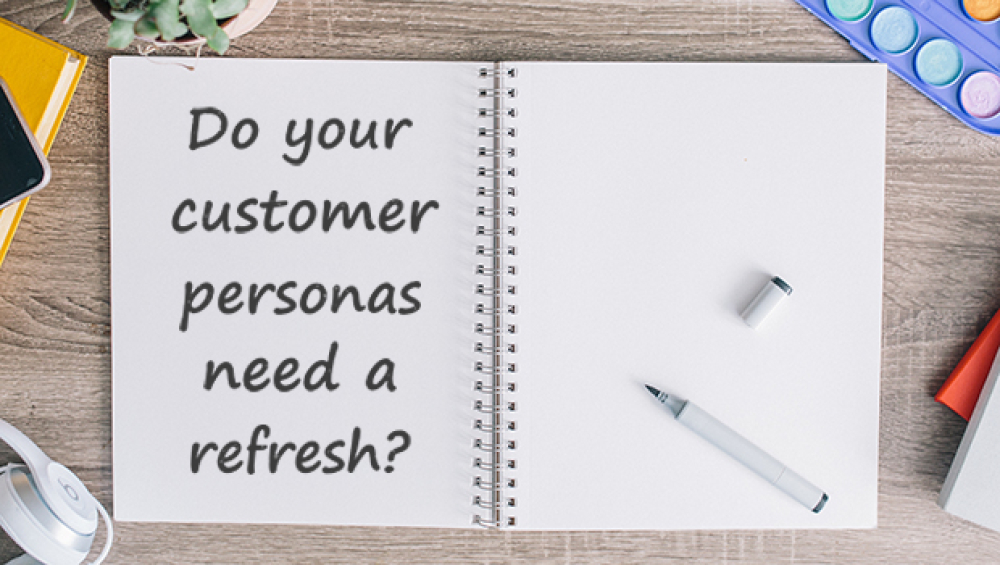Do your customer personas need a refresh?
17 Jul 2015

There’s been some discussion lately about personas being an outdated concept. Surely in the age of big data and automation, personas are no longer necessary, right? Well, not exactly.
Marketers may have access to a lot more data about their customers, but this data tends to be quite complex, unstructured and granular - which can quickly become overwhelming. Personas help marketers organise and humanise their customer data, and provide a framework for tailoring their marketing comms.
Which means personas can be very useful, as most consumers now expect tailored comms. Research by IBM found that 75% of customers think companies should be able to “understand their individual needs”.
Personas can help you address some of these needs, by providing guidance on tone of voice, distribution channels and relevant topics for your marketing content.
So, back to the original question - do your customer personas need a refresh? You may be thinking: “We spent ages creating our personas and getting them just right - why change them?”
Remember, people aren’t static, and your personas shouldn’t be either. It’s likely that some of your customers’ interests, pains or goals have changed since your personas were developed. For example, new technologies may change the way your customers prefer to shop with you or interact with your content. Cultural shifts may influence their needs or goals when deciding to purchase.
As your customers interact with you, you’ll (hopefully) be gathering more information about who they are - their interests, why and how they buy, their preferred channels and types of content, and more. Refreshing your personas is a chance to ensure that any new insights you glean about different types of customers are accurately reflected.
So, how can you make sure that your personas are up to date?
Ask them!
The relationship you have with your customers and the size of your business will influence how you go about this, but checking in with your customers in some form is key to keeping your personas relevant. You might bring in focus groups, call up key customers for a chat or run a survey to reach a larger group.
Try asking the same basic questions each time you check (typically every 6 to 12 months) to provide a benchmark and see how your personas are changing over time.
Make sure you keep questions relevant to your product / service - try to find out what influences your customers to purchase from you and why they choose you over your competitors. Common practice is to break down each persona by:
- Description: Who are they? (age, gender, marital status, interests, etc.)
- Pains: What are their needs? What obstacles do they face that your product / service can help them with?
- Goals: What are they trying to achieve?
You can also check in with customers in a less formal way. For example, when you send out a re-engagement email, prompt subscribers to update their profiles with additional interests, preferences and demographic data. Not only does this help you send each customer more relevant content, it can also provide valuable nuggets of information to help you flesh out your personas.
Check your data
You don’t have to rely on direct conversation with customers for all of your research - the data you hold on them should provide some insight as well.
Start by grouping your existing customers into the personas that best fit. Marketing automation software can help this process, allowing you to segment customers based on things like age and gender, marital status, average spend, or any other data that’s relevant.
The process of grouping and matching up your customers should give you an opportunity to sense-check that the key characteristics of each persona are still relevant. Make a note of what customers in each group are buying, the offers and messages they’re engaging with, etc. and look for any discrepancies.
Let’s say, for example, that you’ve got a persona called Young Mum Maggie, who’s typically a busy mum with one or more children under 5. You’ve matched your existing customers to this persona based on gender, age range and the fact that they’ve purchased multiple products for young children.
But an analysis of the customers in this group shows significant differences in average spend and the types of offers they engage with. This suggests that you may need to split this persona into two - one for high spenders and one for low spenders.
Pulling it all together
Once you’ve done a bit of research and compiled your findings, go back through each persona and strip out any descriptors, pains or goals that are no longer relevant.
Resist the temptation to include all the information you’ve gathered. Personas will be most effective when they’re pared down, rather than bloated with extraneous detail. And remember, a persona is meant to represent a group, not one individual, so don’t rewrite one based on a single customer’s feedback.
Try to go through this process a couple of times per year to keep your personas in top shape. The more often you do it, the less time it should take - and the more useful your personas will be.
Find out how to create better personas and put them to work with our best practice guide.


Please login to comment.
Comments